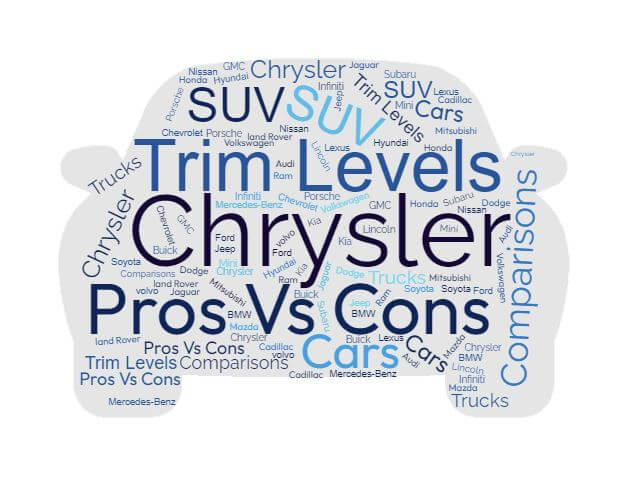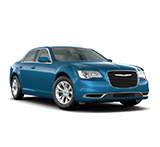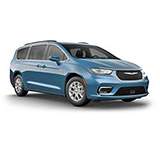Chrysler

About Chrysler
Chrysler is one of the most enduring names in the American automotive industry. Chrysler Motors has had a long, interesting history, particularly in its competition with other domestic auto manufacturers. Long known as one of the "Big Three" along with Ford and General Motors, Chrysler has survived under a multitude of ownerships and name changes. Today it continues the tradition of fine craftsmanship and attention to detail under the name FCA US LLC.
Although the company had humble beginnings, it was guided expertly by its original owners and management team. Through the depression of 1919-1935, World War II, and financial booms and busts during the past three decades, Chrysler has always managed to reinvent itself and retain the trust of the American consumer.
1) 1925-1954: Forward Thinking And Innovation
Walter Chrysler was hired in the early 1920s to oversee operations management at the Maxwell-Chalmers automotive plant. In 1924 Chrysler introduced the first model named after himself. The prototype Chrysler automobile gained immediate popularity because of its upgraded engine components and technically advanced features such as a carburetor air filter and replaceable oil filter.
The following year, Maxwell Motors was merged with the new Chrysler line of vehicles and became known as the Chrysler Corporation. Soon afterwards, the Maxwell models were discontinued, and in 1928 the company got its first real boost when the Dodge Brothers company was purchased. The Plymouth brand was introduced in the same year, and Chrysler Motors became the first domestic car maker to begin designs of models according to their class, segment, and engine power.
Plymouth models were the low-end products. DeSoto vehicles became the mid-class autos. The Imperial model was the cream of the crop, the most expensive and luxurious of the Chrysler line.
2) 1955-1984: A New Breed Of Luxury Cars
Chrysler made headlines in 1955 by introducing the first transistor car radio. This was optional equipment on the Imperial but soon became available on the entire line of vehicles. In 1958, another breakthrough in engineering technology soon became the talk of the industry. Chrysler developed and installed electronic fuel injection on all engines manufactured for the Chrysler 300, Dodge D500, the lone DeSoto model, and the newly premiered Plymouth Fury.
Although it was a best-seller, the famous Imperial was eventually dropped as a separate brand name in the early 1970s and became simply a Chrysler model. The Valiant, introduced in 1960, became the new low-end model, and along with the Plymouth, Dodge, and DeSoto models continued with yearly design changes through the 1970s.
3) 1985-2006: Expansion Through Acquisition
In the mid 1980s, Chrysler was suffering from the same automotive disease as other domestic car makers. The high price of gasoline brought about a demand for smaller, more fuel-efficient models, and Chrysler's CEO, Lee Iacocca, reorganized the entire company with the help of outside, third-party corporate engineers.
In 1985, Chrysler entered into a venturous agreement with AMC, the result being an entirely new set of vehicle platforms. These resulted in the Omni model as well as Chrysler control over all AMC stocks held by the European automaker Renault.
This virtual takeover also resulted in attainment of the Jeep and Eagle brands, and Jeep became an entirely new division of the company. Chrysler now had the most extensive line of vehicle models in its history, and sales began to climb into the record books as well.
In 1998, Chrysler entered into another agreement, this time with Daimler-Benz Auto Group. The corporation was renamed DaimlerChrysler, and soon afterwards the Eagle brand was discontinued. Also during this period, Jeep became a separate division of the auto group. One of the casualties of this merger was Plymouth. One of the most famous brand names in the industry, Plymouth vehicles were discontinued in 2001.
4) 2007-Present: A New Generation
In 2007, DaimlerChrysler announced the sale of approximately 80 percent of its stock to Cerberus Capital Management, and the corporation was renamed Chrysler LLC. The financial bust of 2008 led to the filing of bankruptcy for Chrysler LLC, and a total reorganization was undertaken.
With help from the federal government, the company stayed afloat, and Fiat Motors acquired most of the stock. Today, Fiat Chrysler Automobiles - abbreviated as FCA - manufactures Chrysler, Dodge, RAM, and Jeep models, and the new company slogan "America's Import" is an obvious self-acknowledgement as a producer of fine-quality autos that compete well with foreign offerings.
Conclusion
It would be incorrect to say that Chrysler has suffered the most of any domestic automaker based on its recent bail-out by the federal government following Chapter 11 filings. All car manufacturers have experienced ups-and-downs, but most find it difficult to recover without some sort of aid. Aside from the terrible beating Chrysler took with the financial problems of 2008-2009, the company has certainly maintained its reputation for offering classy, upscale, and well-built machines.



